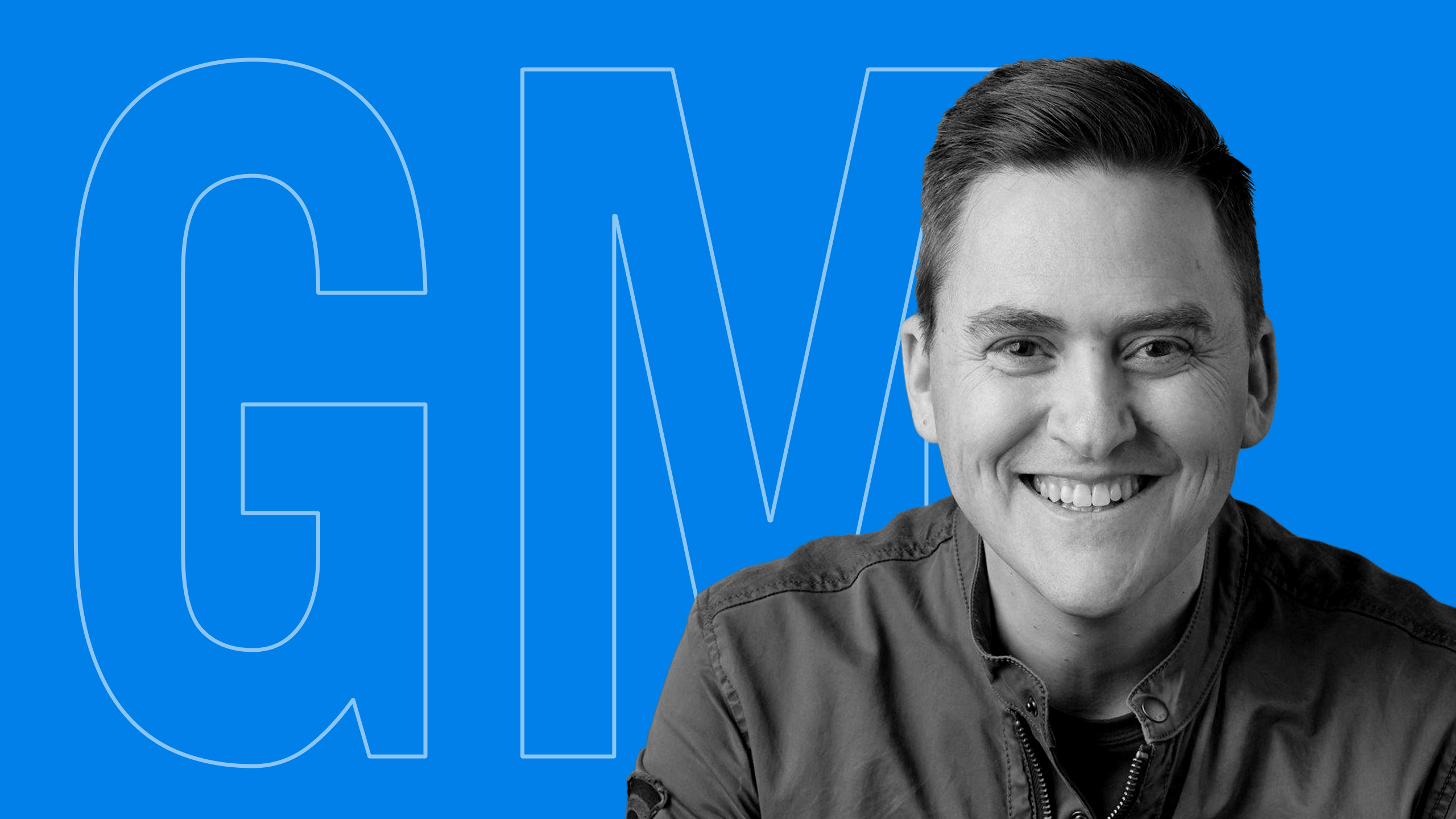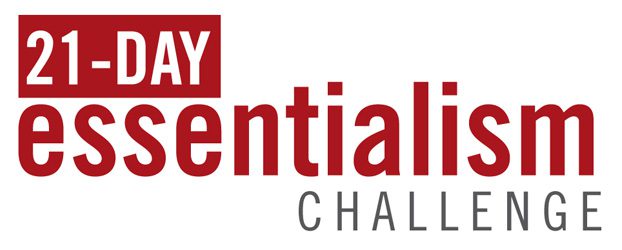Greg McKeown:
Welcome everyone. I’m your host, Greg McKeown, and I am with you on this journey to learn how to make our highest contribution in life but without burning out. How does essentialism help us with life’s big transitions? By the end of today’s episode, you will have one clear essentialist strategy that you can use before, during, and after the great transitions, whether they’re expected or unexpected. Let’s get to it.
To get more out of today’s episode, remember to share this episode with somebody new. Invite them to subscribe to the podcast so they can continue this ongoing conversation with you and help you accomplish more by doing less.
In the venerable tradition of the Hebrew Bible, we find a narrative thread centering around one Joseph of technicolor dream coat fame. A fellow who single-handedly averts the total calamity of a gruesome seven-year famine, a transition writ large, if ever there was one. It all kicks off when the Pharaoh himself having a feverish dream that stubbornly resists interpretation. Naturally, he summons his entire coterie of sages, soothsayers, and advisors expecting them to crack the code.
The air hangs heavy with expectation and silence. A spectral ensemble of blank faces and shrugged shoulders is all he gets. However, as if it’s an afterthought or an anecdote at a party, someone recalls this Joseph character languishing behind prison bars, apparently with a knack for decoding dreams, so on he is hauled into the royal presence.
Pharaoh, in the dream, finds himself by a river, and he watches seven hearty, healthy kind, let’s just call them cows, emerge from the water and chill out in the meadow. This pastoral scene is then disrupted by the emergence of a second, visibly scrawnier set of cows, and then in a bizarre twist, the healthy cows devour the lean ones. Our hero. Joseph, with his dream whisperer hat on, elucidates that this strange bovine buffet signified a forthcoming seven-year period of plenty in Egypt to be abruptly followed by a grueling seven-year famine. Ergo Joseph suggested that the Pharaoh ought to designate some wise and discreet soul to stockpile a fifth of the yield every year for seven years to act as a bulwark against the impending years of scarcity.
The plan is not merely accepted but applauded, and Joseph swiftly elevates from the prison cell to the position of advisor, the number two in the Egyptian hierarchy, deftly overseeing the execution of this plan. Consequently, when the famine does strike, it finds Egypt prepared and unflinching, saving not only its own citizens but the surrounding locals and Joseph’s extensive kin as well.
Within this seemingly simplistic tale lies an essentialist blueprint for effortless execution. Let’s pause to make one thing clear. We are all, you, me, everyone floating in a swirling sea of unpredictability. Take away the drastic happenings like famines and other large-scale cataclysms. The constant spice of life is unpredictability. The simple act of commuting is, as we all know, a dance with uncertainty. Will the roads be free-flowing or clogged up tighter than a miser’s purse? The same with air travel. Will your flight take off on time, or will some unforeseen delay throw a wrench in your carefully made plans? One might take a wrong step tomorrow and end up with a wrist fracture.
In the business world, it’s, of course, just as dicey. A supplier might fall behind schedule. A coworker might fumble an important task, or a client could make a capricious last-minute change, and on it goes.
Then there are those monolithic shifts in the landscape of one’s life transitions so transformative that they seem to recast the self itself, the utter redefinition of selfhood that accompanies becoming apparent, like stepping off the solid foundation of university life into the murky, swirling currents of real-world professional life, like the seismic shifts accompanying the loss of employment, the unexpected shift in identity resulting from illness or disability like the soul-crushing gravity of bereavement like the stark void left by the retreat of work-life exposing the raw face of retirement.
Some of these tremors strike without warning, sneaking up on you, while others advance with the inevitability of a marching army. Yet even those that are fully anticipated are laced with wild cards, dotted with uncharted territories, and come packaged with unforeseen challenges that confound our best-laid plans.
The only predictable thing in this universe of ours is the unpredictable. Hence, we have two choices. Either sit tight and brace ourselves for the unexpected, or better yet, prepare for it. In essence, we need to create buffers. What’s a buffer? You ask? In the most literal sense, a buffer is a barrier that keeps two potentially harmful entities from colliding into each other. Consider, for example, a buffer zone around an environmentally protected area. It’s a tract of land deliberately kept vacant to provide a safety cushion between the preserved territory and any prospective threats trying to invade it.
In this one episode, I was trying to impart to my children the principles behind this idea of buffers. It transpired during one of our family car rides, a setting ripe for some real-time hands-on learning. “So envision this,” I said, “We have to reach our destination three miles from here without having to hit the brakes, not even once.”
Their eyes widened as the magnitude of the task dawned on them. The variables at play were simply innumerable and unpredictable. We had no control over how long a traffic light would flash green or whether the car in front would get stuck by a sudden whim to swerve or hit the brakes. The only feasible way to avoid disaster was to maintain a healthy space cushion between our car and the one ahead. This gap, I explained, was our buffer. It granted us the necessary temporal latitude to react and adapt to the sudden vagaries of other drivers sparing as the whiplash of abrupt halts and starts.
This car game, of course, stands as a decent metaphor for life and work transitions by consciously instating buffer buffers, we can ease the execution of what’s essential, reducing friction and stress. During our playful exercise, my children noticed that my attention would waiver as we’d dive into animated conversation, laughing and joking. Consequently, I’d neglect the buffer zone, inching too close to the car ahead necessitating an unnatural maneuver like a sudden swerve or a last ditch breaking effort.
Life and work transitions can mirror this scenario too. We get swamped, distracted, and consumed by the transition at hand, and before we even realize it, we are left to metaphorically swerve or slam on the brakes at the last moment. Of course, we see this tendency not just in great transitions but in the normal activities of our lives. How often have you sat through presentations, meetings, workshops where the presenter was cramming an avalanche of slides into a woefully inadequate timeframe or attended a conference where a potentially enriching conversation was abruptly cut short because the presenter felt obligated to plow through their prepared content?
This has become such a recurring tab, tableau, that it seems like the norm, the default. Hence when I encountered a facilitator with a distinct divergent philosophy, it felt like a gust of fresh air. He was outlining a four-hour workshop, but instead of earmarking the typical 10-minute Q&A at the end, he proposed a whole hour. His justification was that he enjoyed having a luxurious amount of time just in case things come up.
Initially, his suggestion was shrugged off as extravagant, and he was nudged back to the conventional format. Then predictably, the workshop overshot its allocated duration, and the facilitator found himself scrambling to cover the remaining content. Heeding the initial advice, the organizers then revised the format to include the buffer he had suggested. Sure enough, unexpected issues popped up, but the buffer came to the rescue. The class ended on time, and the facilitator could devote his energy to teaching instead of fighting the clock.
The nonessentialist in tiny transitions and large perennially bathes in the rosy hue of best-case scenarios. We’ve all known those souls, and let’s face it, sometimes we’ve been those souls ourselves who possess an uncanny knack for underestimating the temporal footprint of tasks. Statements like, “I’ll get this done in five minutes,” or “I’ll have that project squared away by Friday,” or “A year is all I need to birth my magnum opus.”
A familiar refrain, however, the universe in what David Foster Wallace would call its infinite jest, as other plans, unexpected hiccups crop up or the task reveals itself to be more convoluted than initially assumed, or maybe the initial estimate was a result of misplaced optimism. As reality recalibrates these optimistic projections, they find themselves ensnared in reactive problem-solving, inevitably causing their output quality to take a hit.
Contrast this with the path of the essentialist, which sings a different tune. The essentialist gaze is trained on the horizon, anticipating the path ahead. She draws up game plans, readying herself for myriad contingencies. She treats the unexpected as a guaranteed guest at life’s banquet. She carves out a buffer for her own sanity to protect the asset herself, plus a safety margin to buffer her against the unforeseen, offering her flexibility when things don’t unfold as planned as they so often don’t.
So consider this proposition in times of transition. Add a 50% buffer to your time estimates. You can see the point in everyday life. Take, for instance, an acquaintance of mine who consistently anticipates a five-minute drive to the local supermarket. This estimate, of course, is anchored in a single memory distorted distance when she actually made the journey in the said timeframe. The reality, though, often stretches to a 10 to 15-minute ordeal, and this kind of miscalculation in itself is no great disaster, but when it becomes the norm rather than the exception in her life, it spirals into a problem. And what can we imagine when she’s dealing with a major life transition? Then she’s eternally running late, burdened by a constant undertow of guilt and stress to the point where it’s taken a physical toll on her. Yet she persists in her optimistic though unrealistic time assessments. Every once in a while, she does manage to reach the store in five minutes or wrap up a conference call in half an hour, but the collateral damage both to her own well-being and those around her is significant. She’d contribute far more effectively to these rushed endeavors if she allowed herself a buffer.
Perhaps you found yourself underestimating the time required for a task. If so, you are in good company. This phenomenon is officially termed the planning fallacy, a term coined by Kahneman in 1979. It refers to our uncanny knack for underestimating the time span of tasks, often tasks we’ve previously undertaken. In one study, 37 students were asked to estimate the time required to complete their senior thesis. The students optimistically averaged 27.4 days if everything went as well as it possibly could. While their pessimistic projection stood at 48.6 days, if everything went as poorly as it possibly could, the actual average time clocked in was 55 days, with only 30% of students managing to meet their initial estimates. Peculiarly, people often acknowledge their underestimation tendencies but continue to regard their current estimates as accurate.
Various explanations exist for our tendency to underestimate task duration, but social pressure, I think, is the most intriguing one. One study found that individuals who estimated task duration anonymously weren’t prone to the planning fallacy. This suggests that we often realize our time projections are unrealistic but are hesitant to admit this publicly. An antidote to this issue is simply to pad your time estimates with a 50% buffer. If this seems like an overreach, reflect on how often tasks actually do take 50% longer than anticipated.
When you’re dealing with major transitions, you may want to pad your time estimates by a hundred percent or even by as much as 200% because I’ve found in times of transition that the urgency and reactivity of the period can exacerbate the planning fallacy. In summary, where you can anticipate the big transition, build buffer by preparing in an extreme way in the midst of the transition, whether seen or unforeseen, create a time buffer for yourselves, and after the major transition, you might add on hold days of buffer time so that you can handle the terrific transitions of your life a little more gracefully and without burning out.
Thank you. Really thank you for listening. What is one idea that you’ve heard today that has stood out to you? What is one idea that’s come to you as you’ve been listening to this episode? Who is somebody that you can share that idea with, and what is one tiny action you can take to immediately build buffer into your lives so that you can handle the inevitable transitions of life?
If you found value in today’s episode, I would invite you to give a five-star review on Apple podcasts. You don’t even have to write a review. Just take that moment to scroll down on the app and give this a five-star review. Once we hit a thousand reviews, it helps my whole team to interview the very best people for this podcast. Thank you, and I will see you next time.







